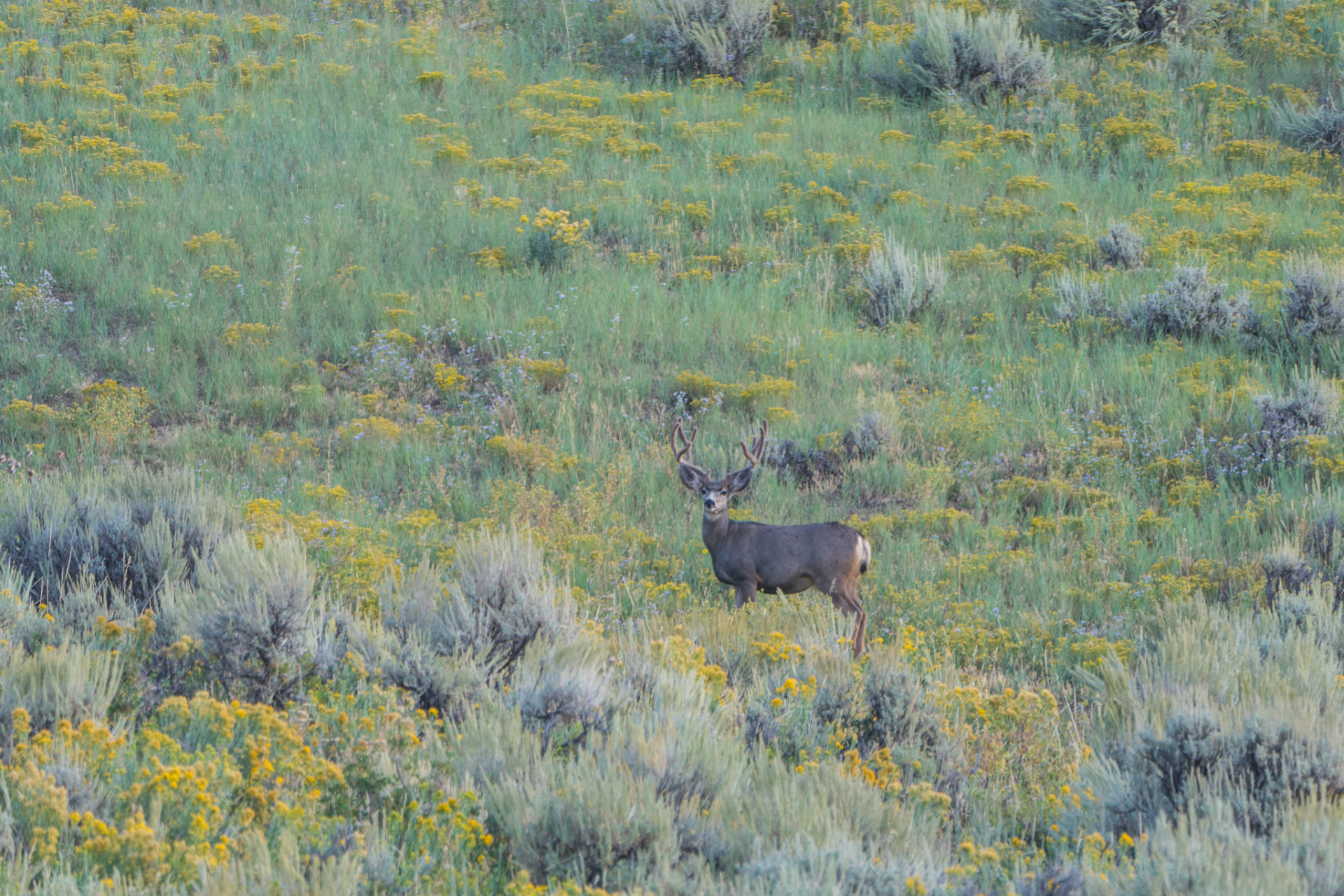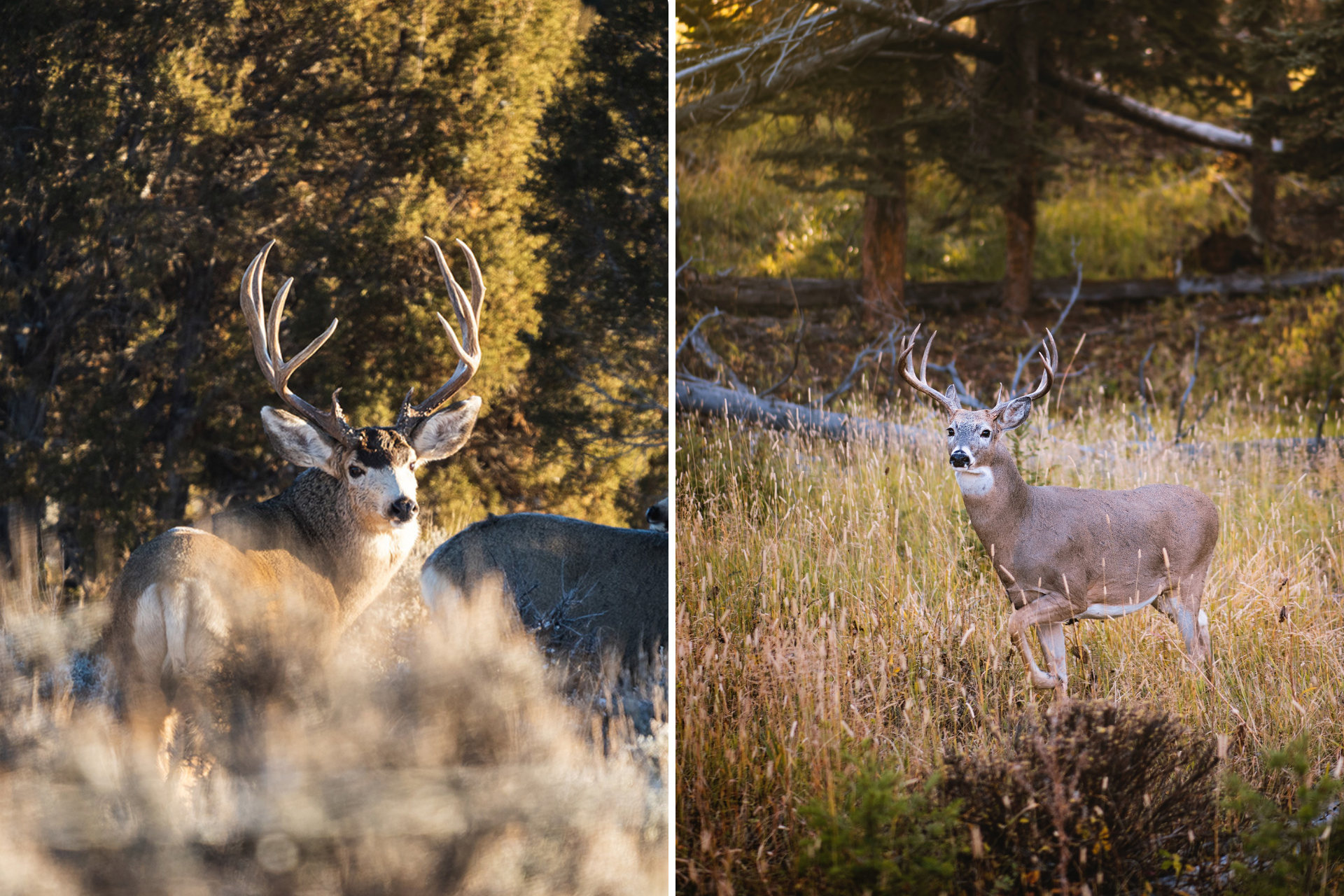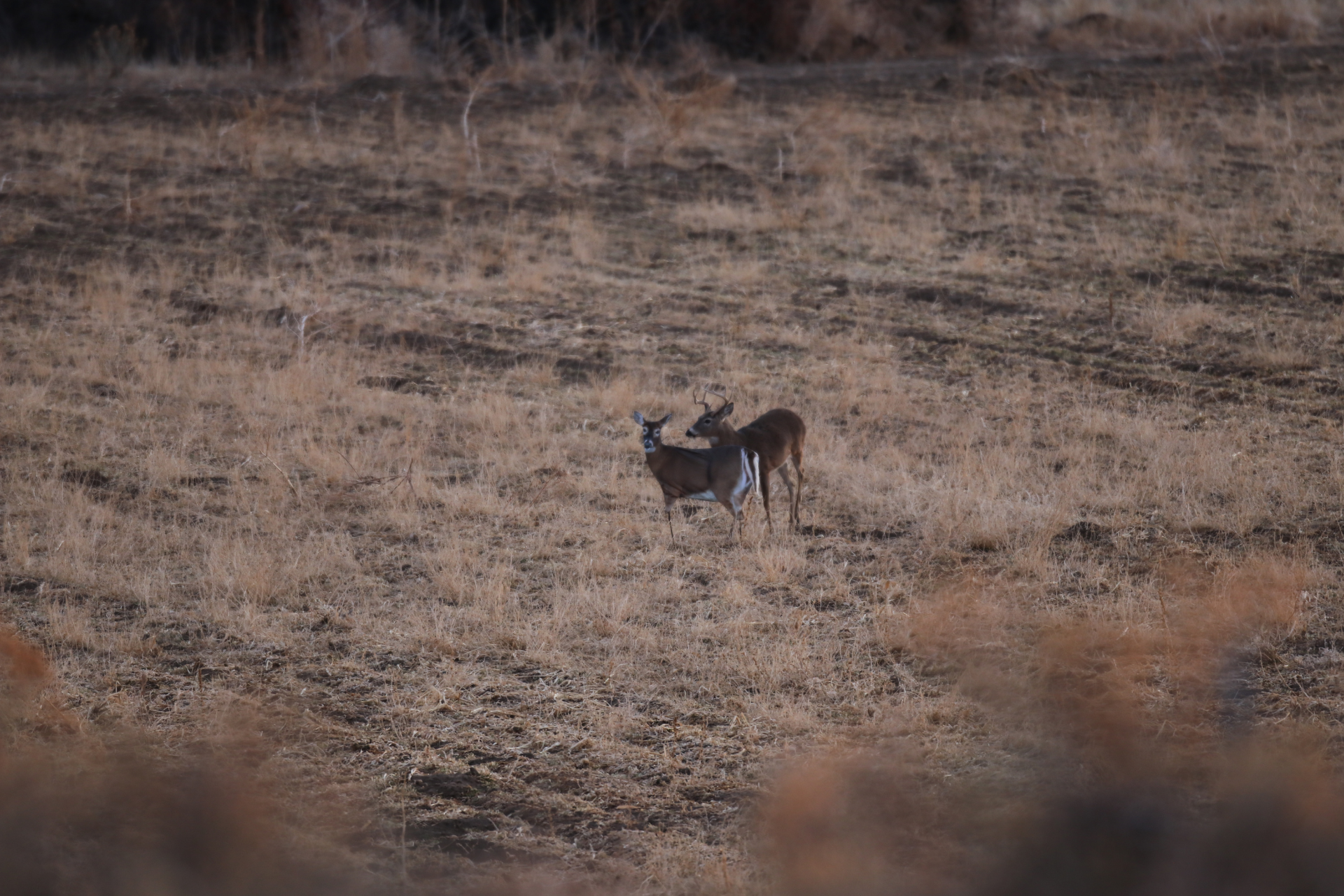Posted by Mary Grace Fisher on Jul 31, 2023
Hunting Whitetail vs. Mule Deer
When you think of deer hunting, two species likely come to mind: whitetail deer and mule deer. Or maybe you had only heard of one of these species until now. Regardless, these two species of deer have their differences. But what makes them different? Read on to find out the various terrains, tactics, characteristics, benefits, and challenges of hunting whitetail vs. mule deer.
Terrain
Unless you travel a lot when hunting, location will play a large part in whether you hunt whitetail or mule deer.
Whitetail deer can be found across the United States, Mexico, and Canada. They thrive in areas with rich vegetation and plenty of water sources, like wetlands or meadows, since these two things are essential for their survival. And in order to feel safe from predators, they sometimes inhabit heavily wooded areas or thickets.
On the other hand, mule deer are often found in drier climates like open plains, mountain basins, and plateaus. But similar to whitetail deer, they need access to water and vegetation — which they get from various streams, lakes, and grassland areas. And when in need of a hiding place, they find shelter in ravines or on rocky ledges.

Mule deer rely on streams, lakes, and grassy areas for water and vegetation.
Characteristics
If you happen to see an animal that you know is a deer, but aren’t sure which species it is, there are several characteristics like their size, coat color, and antler size that make whitetail and mule deer unique.
When hunting whitetail vs. mule deer, one physical characteristic that’s easy to point out is their color. Whitetail deer typically have more of a reddish-brown coat and like their namesake hints, white patches on their tails as well as several other areas of their body, mostly on their underside.
Similarly, mule deer have some white on their bellies, but their tails are typically black in color. And their color is closer to tan or gray, rather than the reddish-brown of whitetails.
Another difference that’s easy to spot is their ears. Mule deer are known for their larger ears that resemble a mule, while whitetail deer have much smaller ears. And if size is your biggest concern when hunting, mule deer are your likely target. They are typically larger in size than whitetail deer and can have bigger, darker racks.

Mule Deer vs. Whitetail Deer
Techniques
There are many different strategies for hunting whitetail vs. mule deer. Before you head out on your hunt, it’s important to know what time of day you’re going and what details you should keep an eye out for. Depending on the type of deer you’re hunting, factors like these can vary.
When scouting, look out for signs like tracks, droppings, rubs, and scrapes to determine what routes whitetail and mule deer tend to travel. Looking for these signs will help predict what location deer might be in when you’re on the hunt, thus giving you a better chance to catch them on the move.
A useful tactic when hunting whitetail deer is implementing calls and various scents to attract deer to your location. However, this strategy will not prove as successful for hunting mule deer since they are much more cautious animals and therefore less likely to respond.
No matter what location you choose for your hunt, ensure you have a space designated to hide out while waiting on the right target. Consider using a decoy to draw the attention of deer away from you while you wait for the perfect shot.

Consider using a decoy to draw the attention of deer away from you while you wait for the perfect shot.
Challenges and Rewards
It’s not a secret that there will be obstacles when hunting any animal, and deer are no different. Thankfully, hunting these creatures can be pretty rewarding when everything lines up right.
When hunting whitetail vs. mule deer, there are a few challenges to keep in mind if you’re set on bringing that trophy home. For whitetail deer, their fast reflexes and alertness can make them a tough target. So it’s important to be as quiet as possible if you want the chance to take a shot. And with an excellent sense of smell, be sure to remain aware of the wind direction.
Mule deer can be a challenge to hunt because they are most active early in the morning, directly after sunrise. Not an early riser? Unfortunately, the later you’re up, the lower your chances are of catching them on the move. And since they’re wary creatures, they can be tricky to spot as they blend into the landscape.
Above everything else, remember to have fun. A rewarding part of hunting is being able to experience some of the most unique scenes in nature. While finding success is the most satisfying, don’t forget to enjoy the adventure.
